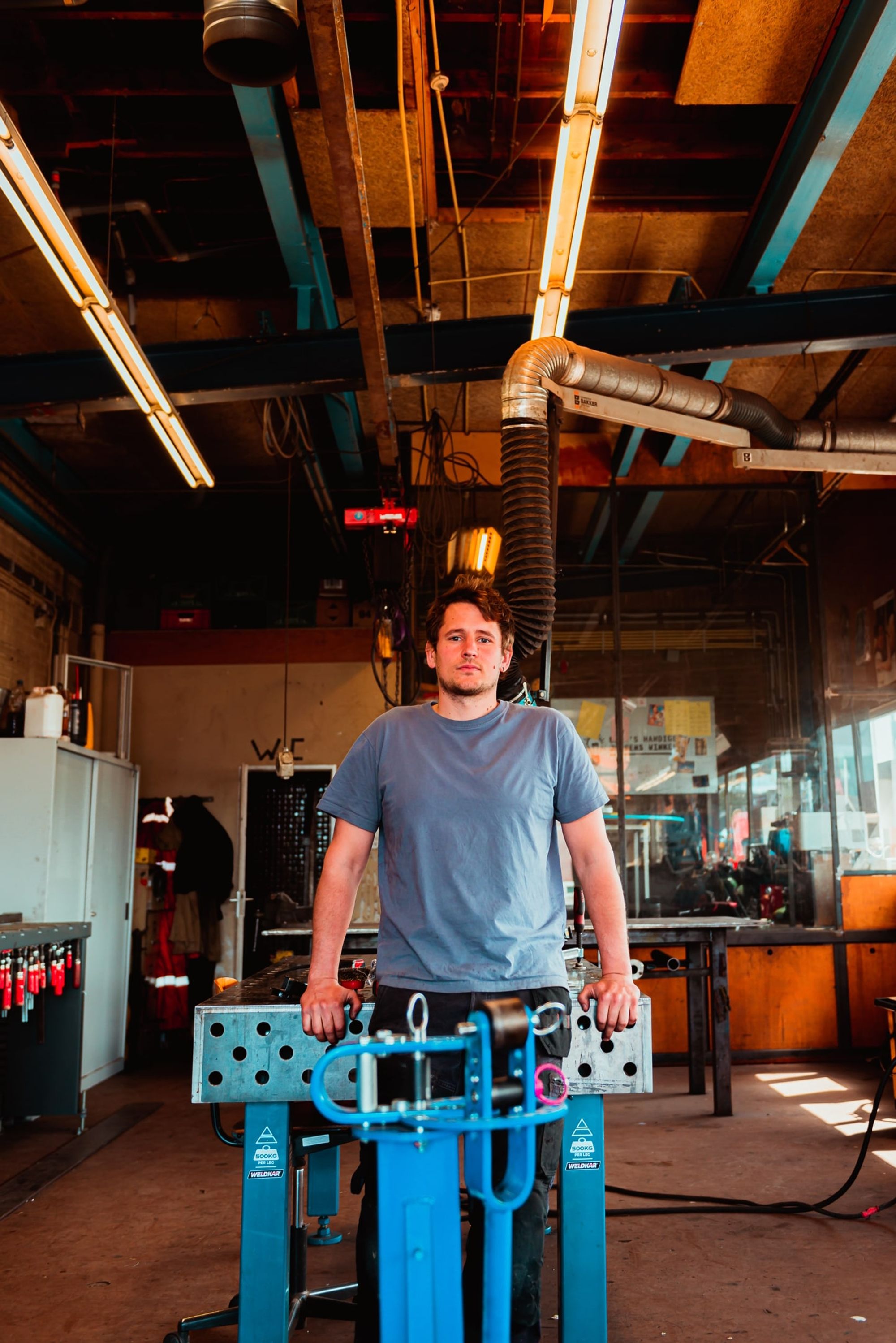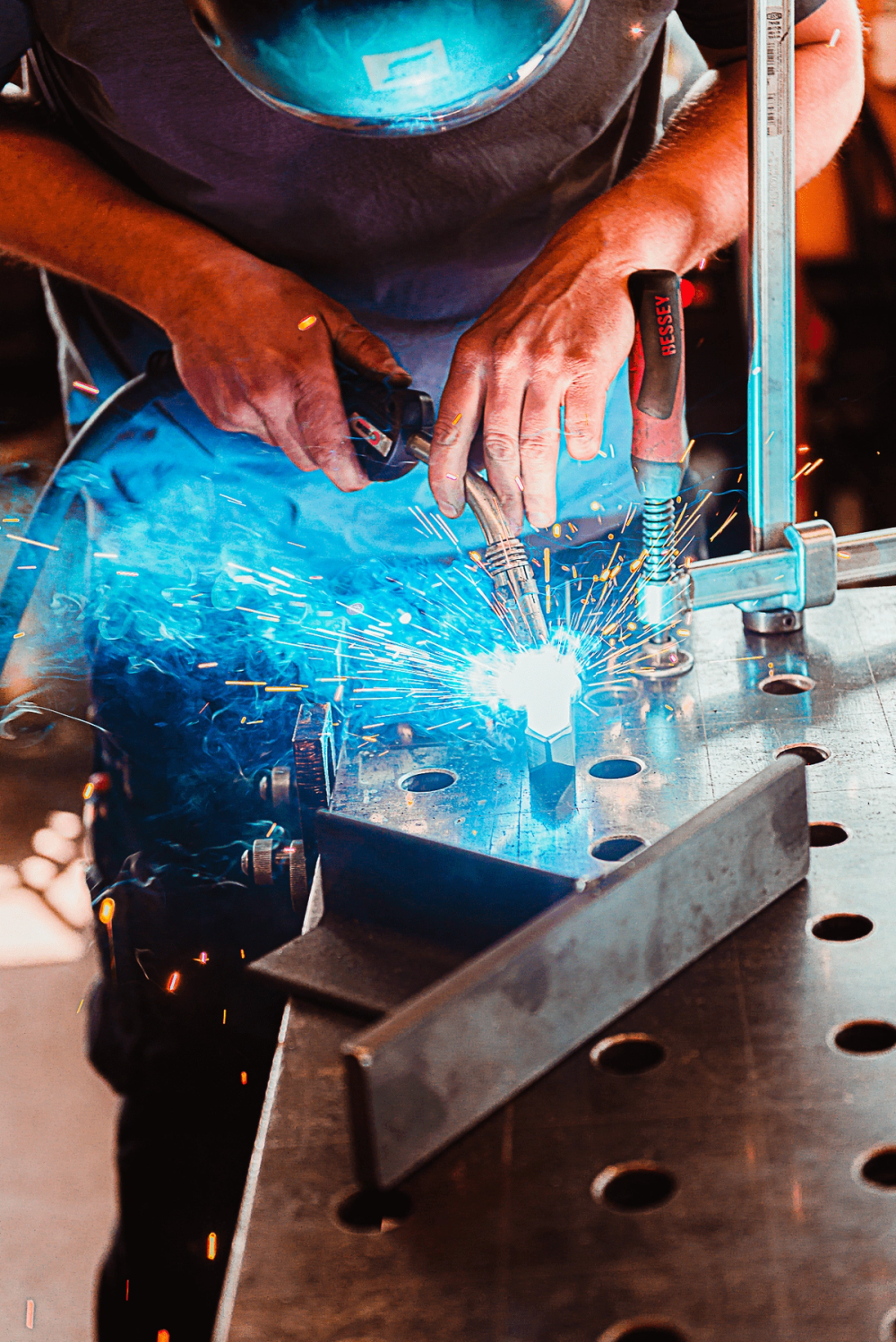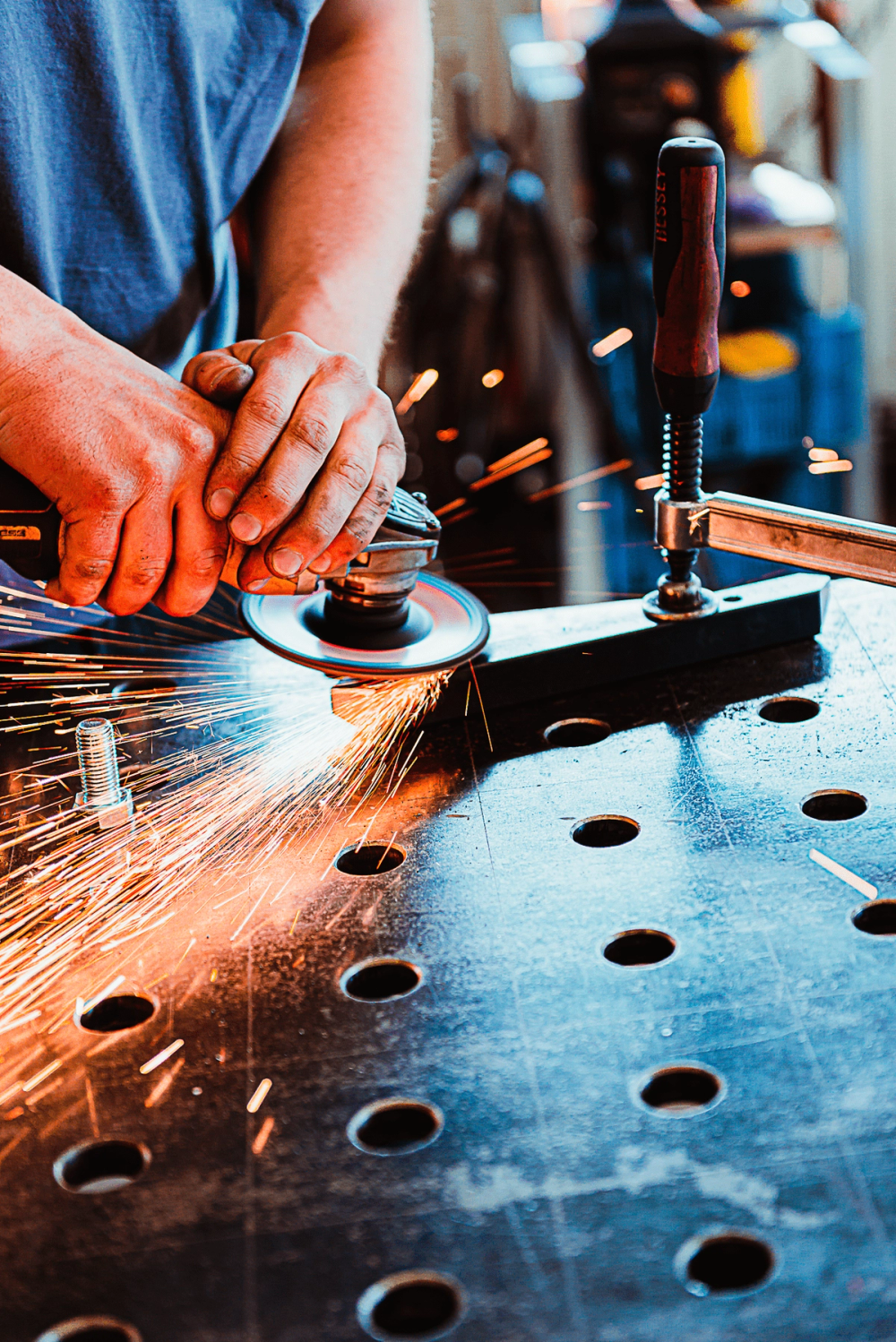Willem van Kelle is a metalworker working from a studio at the Aambeeldstraat. His creations can be understood at the intersection of design and construction. During his studies of mechanical engineering Willem realised the course was too restrictive for him: it didn’t stimulate students to make things of their own. He quit his studies and started working in a concrete factory. It was there that he became inspired to pursue the craft of metalworking. In his current work he combines both creative and technical elements and makes works like a table made from wood and metal, or a balustrade out of metal and glass. In addition, he is always looking to combine old and new techniques and other elements in his working process. His constructions are therefore defined by a mix of modern methods, like laser cutting, as well as more historic techniques, such as heating steel and subsequently shaping it by hand. Willem notes that his way of working - merging old, new, creative and constructive techniques - can be complex; he states that the way he works is “not the easiest way, but it’s my way and the only way I want to work.”
Inspiration connects the past
Willem has been working in the Hamerkwartier for many years and does so with knowledge and admiration for the history of the area. “I have a lot of respect for what once took place here and for the people that used to live here - I think that’s very important, especially when you are a newcomer”. He adds that he feels a connection between metalworkers in the past and himself. The element of precision and striving to include clean, technical detail in his work can for example also be found in the steel beams of old factory halls. Together with six other makers, Willem works from a studio on a three year long contract. Despite several contract extensions in the past couple of years, the studio may soon cease to be available due to the city’s development plans for the area.
Nothing lasts forever
Willem recognizes that Amsterdam-Noord is changing rapidly, that “the city is always in transition. Nothing lasts forever. You have to enjoy the moment while you can.”. Still, he remains focused on enjoying the present-day creative and supportive landscape that the area provides: the makers and community in Noord know each other well and people have each other’s back if needed. He mentions the example of Skatecafé to illustrate that when one project ends, a new one may emerge. With that in mind, he finds both support and inspiration from other makers and his mentors in the area. They have taught him that he can make whatever he wants, in his own way, as long as it is done with passion for the craft.





